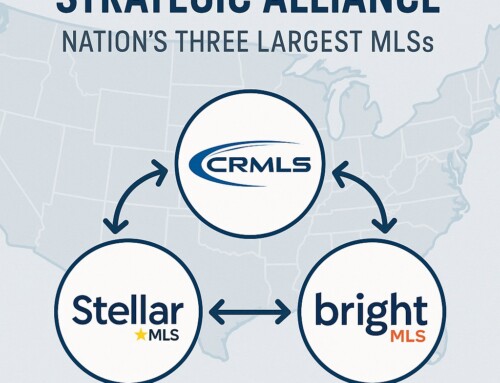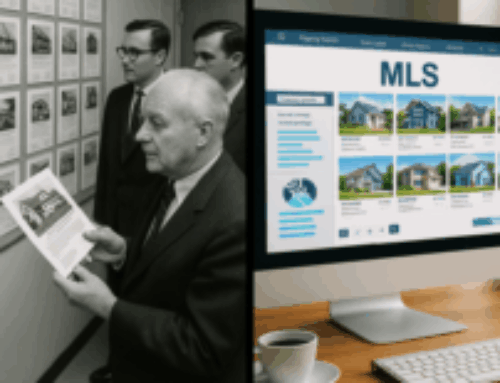 On the business-to-business side of real estate, there are entities that cooperate with one another that also compete with one another. A common term for this in modern business management is a neologism called coopetition. Brokers competing against each other participate together in the MLS to share information and offer of compensation; and may be related to the same franchise. Agents who compete with each other participate in Associations of REALTORS and are often members of the same brokerage or franchise. Associations who compete with each other sometimes cooperate in offering MLS services.
On the business-to-business side of real estate, there are entities that cooperate with one another that also compete with one another. A common term for this in modern business management is a neologism called coopetition. Brokers competing against each other participate together in the MLS to share information and offer of compensation; and may be related to the same franchise. Agents who compete with each other participate in Associations of REALTORS and are often members of the same brokerage or franchise. Associations who compete with each other sometimes cooperate in offering MLS services.
Within this system of collaboration, there are many mutual benefits that are created by working together or purchasing together. Usually the more purchasers or collaborators you have, the more effective or efficient they become. This is commonplace in real estate whereby purchasing in mass quantities is typically lower price than purchasing piecemeal.
Where the efficiency creates a conflict is at a point where competition demands a unique value proposition. Channels or groups in real estate include:
- The National Association of REALTORS
- State Association of REALTORS
- local Association of REALTORS
- MLS
- Franchises
- Relocation networks
- Brokers
- Agents.
In some way, all of these groups work together, but often their interests compete with one another – especially when it comes to offering a product or service to the agent. To the degree that more than one of these entities offer a product to the same agent, conflict and competition is created.
Today, the industry stands on the precipice of great change. There are a variety of forces that have emerged to consolidate the channels where agents get the tools they offer.
- NAR offers tools as member benefits (included in dues) and retail products.
- State Associations offer tools as member benefits (included in dues) and retail products.
- Local Associations offer tools as member benefits (included in dues) and retail products.
- Franchises offer agent and broker tools as value for franchise fees, and offer retail products.
- Relocation Networks offer tools to broker and agent members and offer retail products.
- Brokers offer agent tools as part of their recruiting and retention program that validate their commission splits with agents.
Depending on who you ask – it is about a $6 Billion dollar business ($600 per year per agent times a million agents).
Survival of the Fittest
Today, hyper local markets (also known as a fractured marketplace) define tendencies for product offerings and product adoption. These tendencies vary from office to office, broker-to-broker, franchise-to-franchise, mls-to-mls, association-to-association and beyond. It is the nature of our industry, and the fittest survive in these hyper local markets. The evolution of technology storefronts will be disruptive to today’s hyper local market ecosystem, and competitive turf wars will ensue. Take an example like CMA – there may be 5 or 6 different entities leveraging their channel to offer the product to the same agent.
NAR, State Associations, local Associations, MLSs, Franchises, networks, and brokers all have a lot at stake in this evolution of storefronts. To some extent, vendors are significant stakeholders too. Storefronts for products will define where agents go to get products, and the storefront is the point of purchase that will consume some portion of the profits from the revenue going through them.
Profits vs. Discounts
Because of survival of the fittest, there are infinite business practices that are adopted in hyper local markets in real estate. Just about every product used by agents today is reflected by local customs. For example, some MLSs will only include core services in their offering. Others site license many products to give agents a wide array of tools. Some MLSs charge premiums for extra services. Other MLSs may raise dues to cover those costs. Some MLS only include core services that they wholesale to REALTOR Associations that mark up the wholesale price and may even layer on premium services. You get the picture. I could write 10 pages on the varieties of how products are offered today, but generally they are offered as bundles, through site licence, through independent purchase, or through upgrades.
Your Choice
Depending on where you sit in your hyper local market, you have some choice or influence over product storefronts. As an Association Shareholder you may want the storefront to be managed by you. As an MLS, you may want the storefront to be managed by you. As a broker, you may want the storefront to be managed by you. As a franchise, you may not want any MLSs, Associations, or brokers to offer a store front – but you have less leverage because you are not a participant in the MLS, a member of the Association, or a broker. Storefronts will either compete with one another in the same marketplace, or business rules will be structured to allow specific entities offering an agent channel to display products according to those rules. If not, brokers will get upset because the MLS is competing with them. MLSs may be upset because an Association is competing with them, and so on and so forth.
How to Decide
There is a well-established process for making these difficult decisions in highly charged situations where some lose and some win. Research the alternatives and survey the stakeholders. Compile the results and consider the guidance. Try to find a common path. Communicate the proposed path to the stakeholders again and offer an open forum.
If you need help, let us know.
Disclosure: WAV Group partners are investors in RE Technology – a company that provides ecommerce stores and product galleries to MLSs, Associations, Franchises, and brokerages. RE Technology does not participate in any revenue generated from store purchases. It is simply a technology provider. The RE Technology service allows products to be displayed according to business rules. Agents see (or not see) the products offered by their broker, association, franchise, mls, state association, and NAR. It is permission based because of our observations of these channel conflicts.




